If you're a fan of Thai food, then you're in for a treat with this best homemade Pad Thai sauce recipe. It captures the authentic flavors of this popular Thai dish, combining tangy, sweet, and savory elements in perfect balance. Learn how to make our own Pad Thai sauce using only 6 ingredients for this recipe!
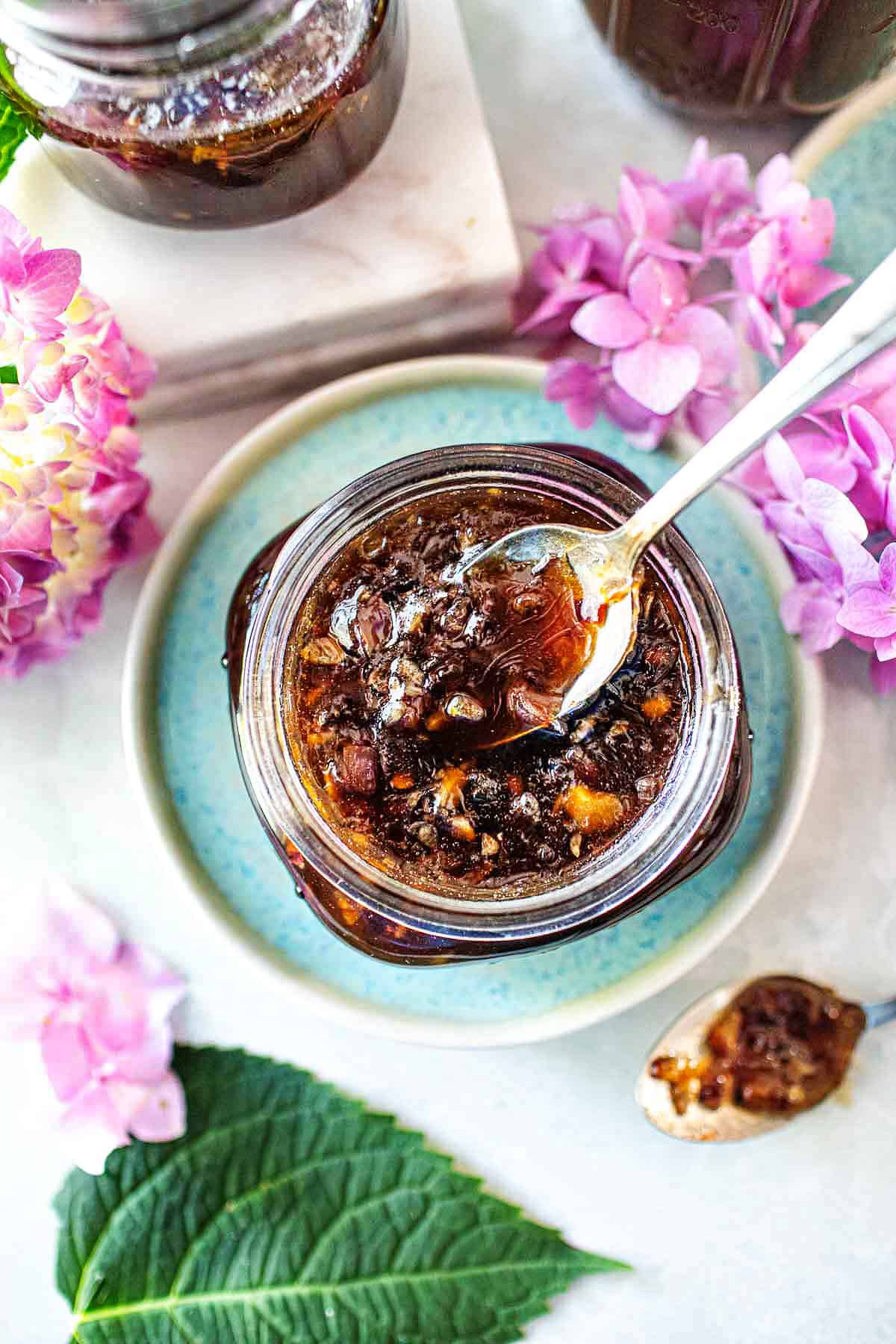
Pad Thai is incredibly popular with American audiences. As a restaurant chef, it’s consistently the top-selling item on the menu. In my cooking classes, Pad Thai is always the most requested, with every class selling out and long waitlists.
The secret I always share with my students? It’s all about the sauce. The sauce is where the magic happens, creating the perfect balance of sweet, savory, sour, and spicy flavors that make Pad Thai so iconic. Let’s dive in and start making this popular and easy sauce!
Jump to:
- Why you'll love this Pad Thai Sauce Recipe
- What is Pad Thai Sauce?
- Ingredients For The Best Pad Thai Sauce
- How to make Homemade Pad Thai Sauce
- Pad Thai Sauce Recipe Tips
- Ways to Use Pad Thai Sauce
- Pad Thai Sauce Variations and Substitutions
- How to Store Homemade Pad Thai Sauce
- Frequently Asked Questions
- More Thai Recipes You'll Love
- Conclusion
- Authentic Pad Thai Sauce Recipe
- More Thai recipes using tamarind
- Related Recipes
Why you'll love this Pad Thai Sauce Recipe
- We'll only need 6 simple ingredients for this recipe! These six essential ingredients will give you the most authentic Pad Thai sauce right from your own kitchen. Find all of them at your local Asian market.
- Firstly, by making your own sauce, you have complete control over the quality of the ingredients and the flavors, ensuring an authentic taste that rivals your favorite Thai restaurant.
- It's homemade! With this homemade Pad Thai tamarind sauce recipe, you can unleash your culinary creativity and enjoy the flavors of Thailand in the comfort of your own kitchen.
- Customizable with the flavors, Not so much the ingredients but the flavors. Adjusting the sweetness, tanginess, spiciness, or salty flavors to suit your taste buds.
- Versatile. This best Pad Thai s doesn't have to be used just for Pad Thai stir-fry recipes. You can use the sauce for many things. Check out the section below for how to use your Pad Thai sauce.
What is Pad Thai Sauce?
A good Pad Thai Sauce is the heart and soul of any delicious Pad Thai dish. It is a harmonious blend of key ingredients, including tamarind paste, fish sauce, sugar, and other flavorful elements.
Tamarind paste, derived from the pulp of the tamarind fruit, contributes a tangy and slightly sweet note to the sauce, while fish sauce adds a savory umami flavor. Read more about tamarind and how it's used in Thai cooking.
The palm sugar helps to balance the tanginess and create a harmonious taste profile that complements the other ingredients in the dish. Learn more about Palm sugar in this helpful blog post here.
Ingredients For The Best Pad Thai Sauce
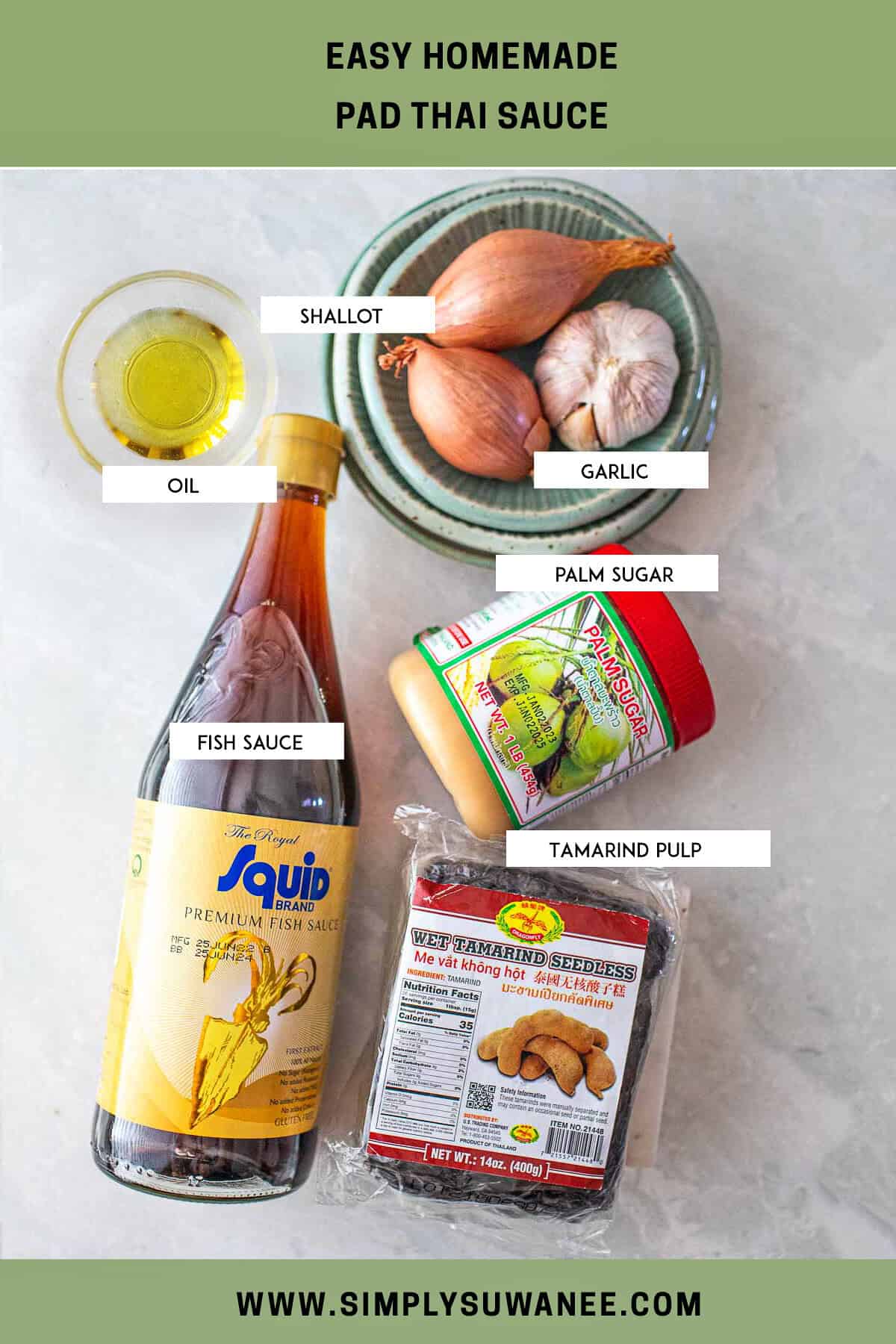
To make your own Pad Thai tamarind sauce, gather the following items. These traditional ingredients are important in creating authentic flavors of Pad Thai. Visit your favorite local Asian markets, and you will find all the ingredients there.
- Tamarind paste or tamarind concentrate. This tangy ingredient is the show's star, lending its distinct sourness to the sauce.
- Fish sauce. A staple in Thai cooking, fish sauce adds depth and umami flavor.
- Palm sugar Balances out the flavors with a hint of sweetness.
- Garlic. Garlic is typically not in the Pad Thai sauce. Still, since this recipe features only the sauce, I want to extract flavors from garlic and shallot, the ingredients used in the Pad Thai recipes, to infuse the sauce even further for an extra delicious Pad Thai sauce.
- Shallot. Shallot is vital in infusing aromatic aroma and texture to the sauce, like the garlic, chopped into small pieces before adding to the tamarind sauce mixture.
- Oil. Use neutral oils like vegetable, canola, avocado, or grape seed oils.
Helpful Kitchen Tools for this Recipe
Consider having these kitchen tools on hand to make the process of creating Pad Thai Tamarind Sauce smooth and effortless.
- A medium skillet with deep sides to prevent the sauce from spilling over or splashing.
- Small stock pot
- Whisk or spoon. Use a whisk or spoon to stir the ingredients together until well incorporated and smooth.
- Measuring spoons. Precise measurements are crucial for achieving the perfect balance of flavors. Use measuring spoons to ensure accuracy.
How to make Homemade Pad Thai Sauce
Step 1. Make tamarind paste from the pulp using this homemade tamarind recipe. You can also use tamarind concentrate from a jar. Store leftover tamarind paste in a glass jar in the fridge for other recipes! (Check below for other delicious tamarind recipes!)
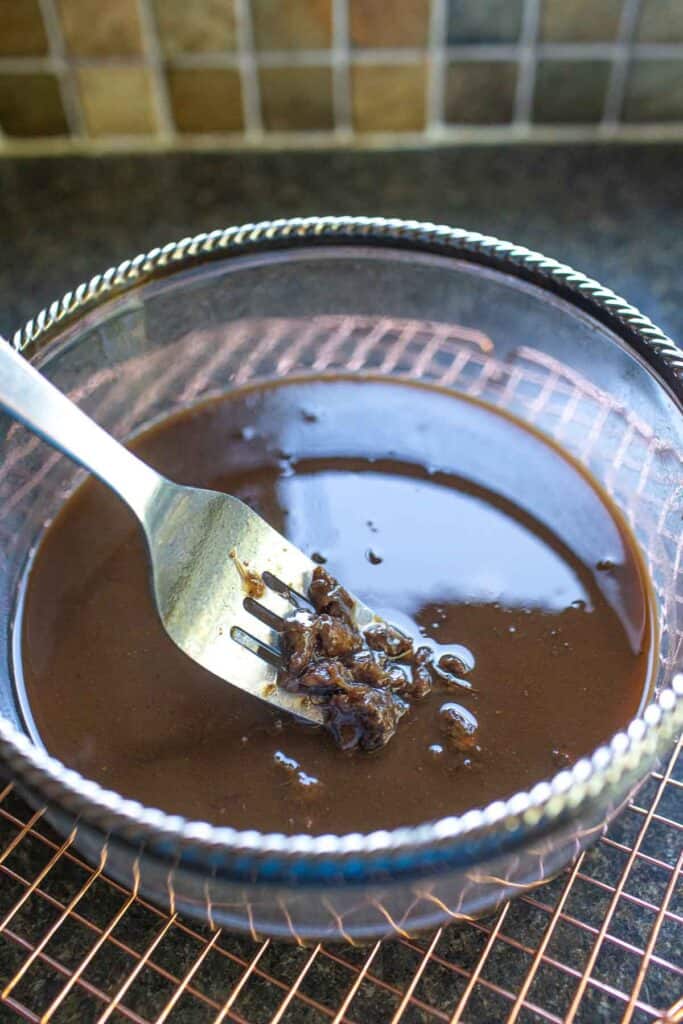
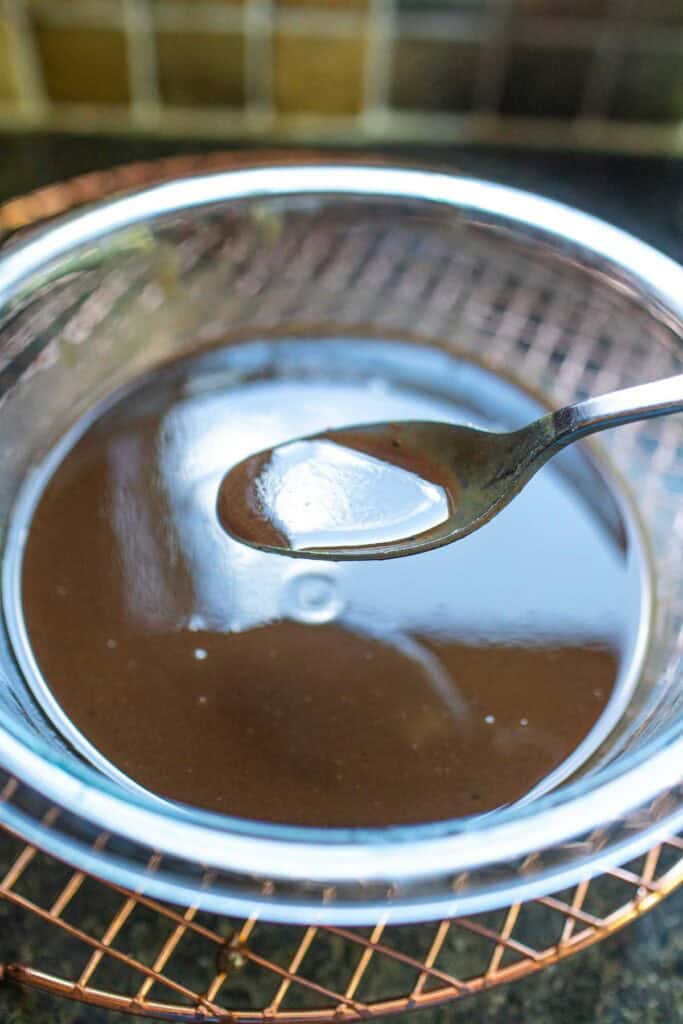
Step 2. Add two tablespoons of oil over medium heat In a medium skillet with deep sides. Once hot, add garlic and shallot and cook until lightly golden brown. Using a small stock pot works too.
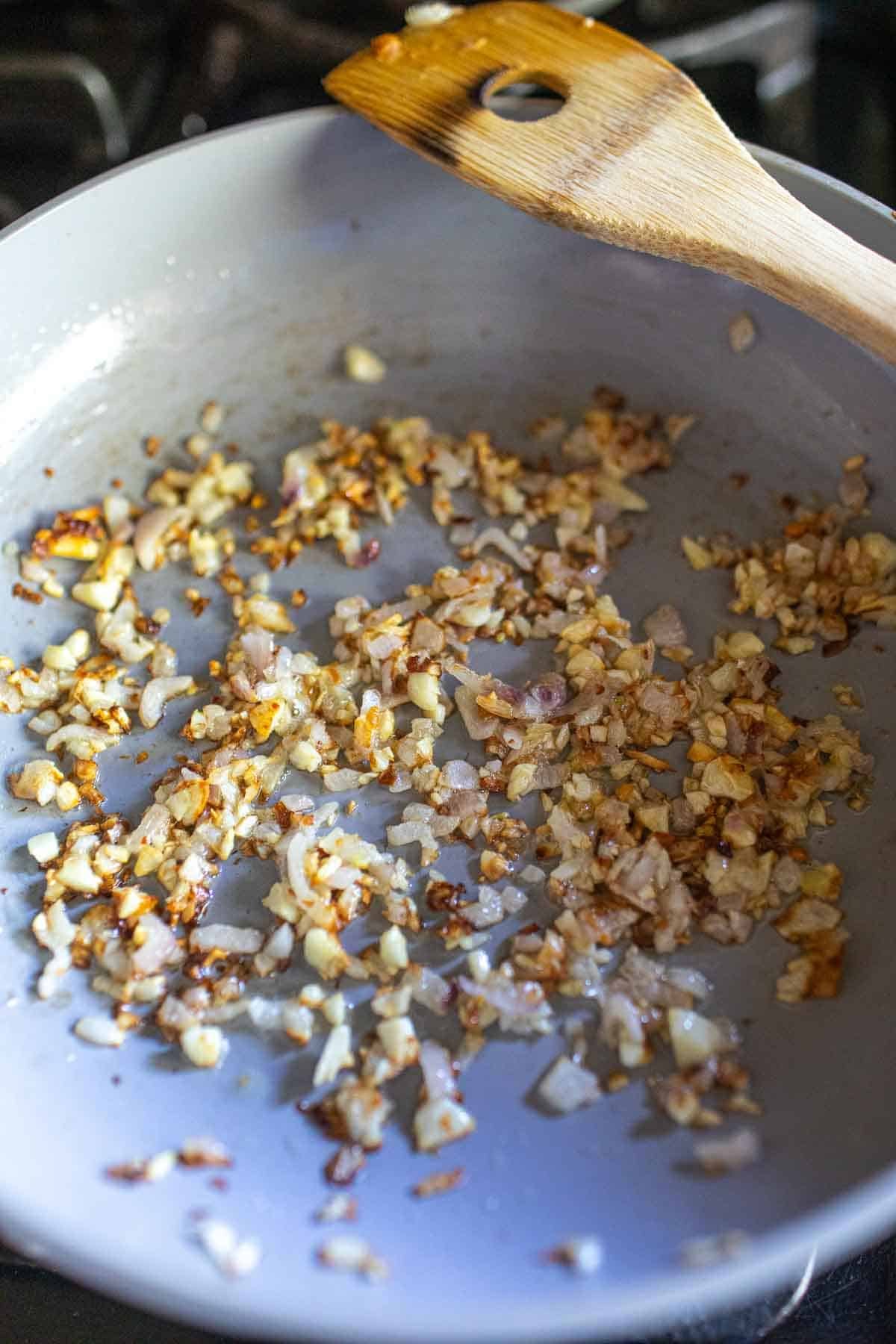
Step 3. Add the tamarind paste, fish sauce, and palm sugar, and stir well until the palm sugar melts. Stirring continuously until the sugar dissolves and the sauce reaches a smooth consistency and thickens slightly.
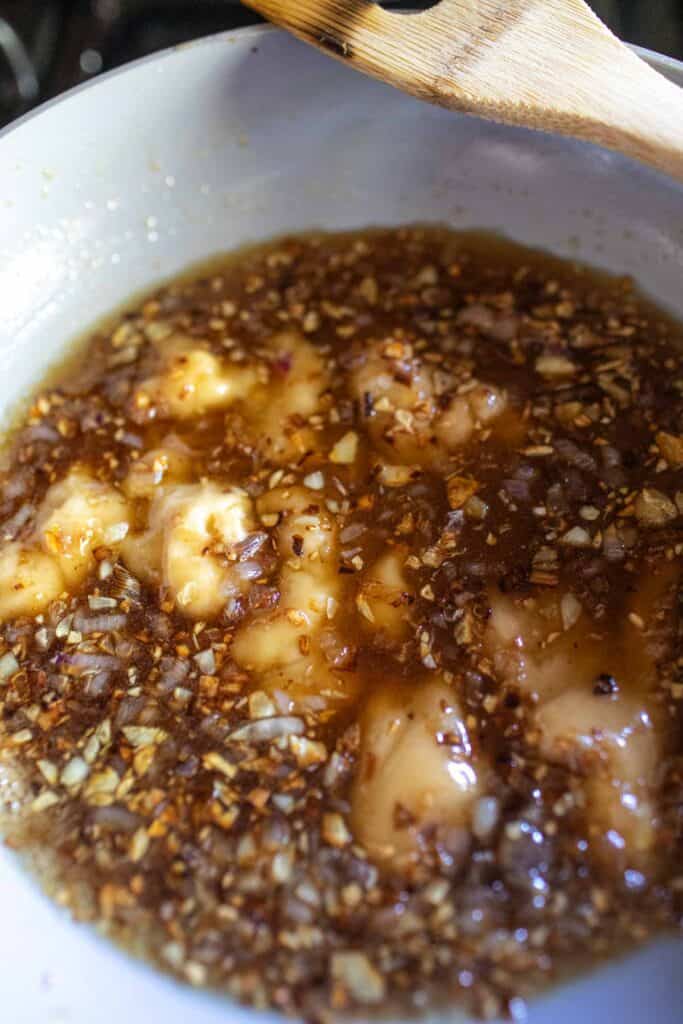
Step 4. You should have a dark and slightly thick tamarind sauce. Carefully taste the sauce (it's hot! ). Adjust the flavors according to your preference. If you prefer it tangier, add more lime juice; if you like it sweeter, add more sugar and fish sauce for a saltier flavor. Customizing the sauce to your liking is the key to creating a truly exceptional Pad Thai.
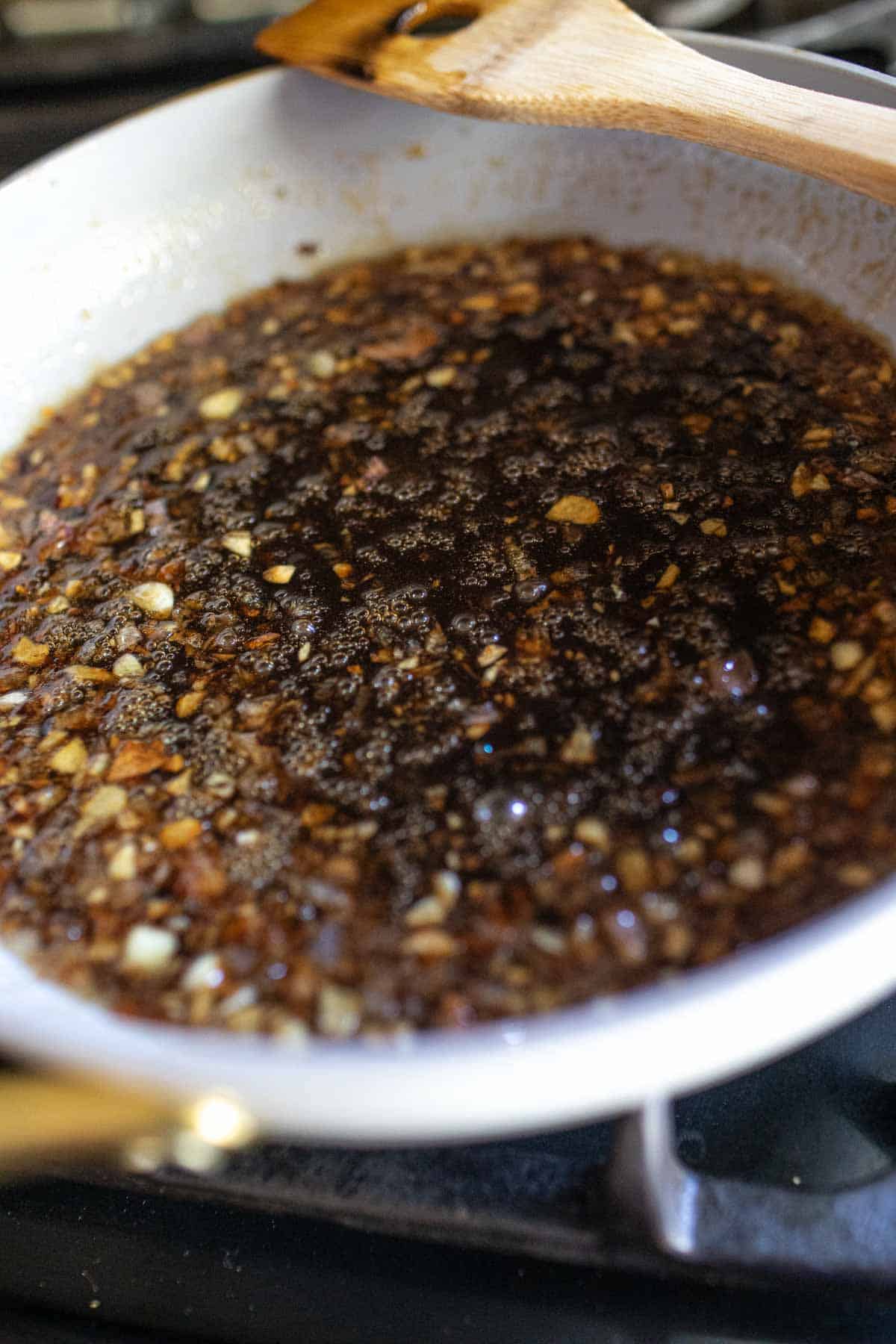
Step 5. Remove the sauce from the pan and pour into a heat-safe container like a glass bowl or jar. The sauce will thickens as it cools. You can stop here or add this next step.
Step 6. Optional step! Once the sauce cools, add the Pad Thai sauce to a small food processor to get a smooth tamarind puree sauce. I didn't, as I loved the texture of the garlic and shallot and used the sauce as a dipping sauce. Do as you wish with this step. You're the boss now! (;
Pad Thai Sauce Recipe Tips
- Experiment with the sweetness and tanginess of the sauce to find your perfect balance. Start with the recommended measurements and adjust according to your taste preferences.
- Use quality palm sugar with no white sugar added. Soft palm sugar paste-like form is the best for making this Pad Thai sauce.
- Use good quality tamarind paste for the best results. Look for brands that offer pure tamarind paste without any additives.
- A small stock pot works for making the sauce. However, I find that the wider pan helps with the consistency of the sauce. A large saucepan will not work, as the sauce gets burnt easily.
- A small wok works too. A large pok could work only if it has a round bottom. My carbon steel wok cooks the sauce too quickly despite the low heat I tested the recipe on.
- Wash your pan as soon as it is enough to wash. The sticky caramelized sauce is hard to wash off once hardened!
- The three holy grails of traditional Pad Thai sauce are tamarind, palm sugar, and fish sauce. Visit your local Asian grocery stores for all three ingredients to make an authentic Pad Thai sauce.
Ways to Use Pad Thai Sauce
- Well, the most obvious use- Make Pad Thai! Use this authentic Shrimp pad Thai recipe.
- As a sweet dipping sauce for your grilling, vegetables or meat, spring rolls, or egg rolls!
- Use Pad Thai sauce like a salad dressing. It's a little thicker for salad dressing, but you can dilute it lightly with 1 tablespoon of water per 1 cup of Pad Thai sauce.
- Use it on sandwiches as a sauce. The sauce is especially tasty on grilled hamburger sandwiches, chicken, turkey, or veggie burgers. The sauce is good on both hot and cold sandwiches.
Pad Thai Sauce Variations and Substitutions
While this recipe provides the foundation for a traditional Pad Thai tamarind sauce, feel free to experiment and add your own twist. Here are a few variations to consider.
- Spicy Pad Thai Sauce. Add red pepper, chili, sriracha sauce, or chopped-up fresh bird's eye chilis for a fiery kick.
- Creamy Pad Thai Sauce. Incorporate a tablespoon of creamy peanut butter into the mixture for a luscious and nutty flavor. Adding the peanut butter is not an authentic Pad Thai sauce, but mixing things up and playing a bit is fun!
- Tamarind Concentrate: Tamarind concentrate is a concentrated form of tamarind paste. Use half the amount of tamarind concentrate if substituting for tamarind paste.
- Sugar: Substitute coconut sugar for brown sugar or palm sugar to add a subtle caramel-like flavor to the sauce. The flavors will change slightly, but it will work.
How to Store Homemade Pad Thai Sauce
If you have leftover sauce, store it in an airtight container in the refrigerator for up to a week. It's perfect for future Pad Thai cravings or experimenting with other Thai recipes. Stir it before using it again, as separation may occur.
To Freeze:
Although it's best to consume fresh sauce, you can freeze it in an airtight container for up to three months. Thaw it in the refrigerator overnight and give it a good stir before using it.
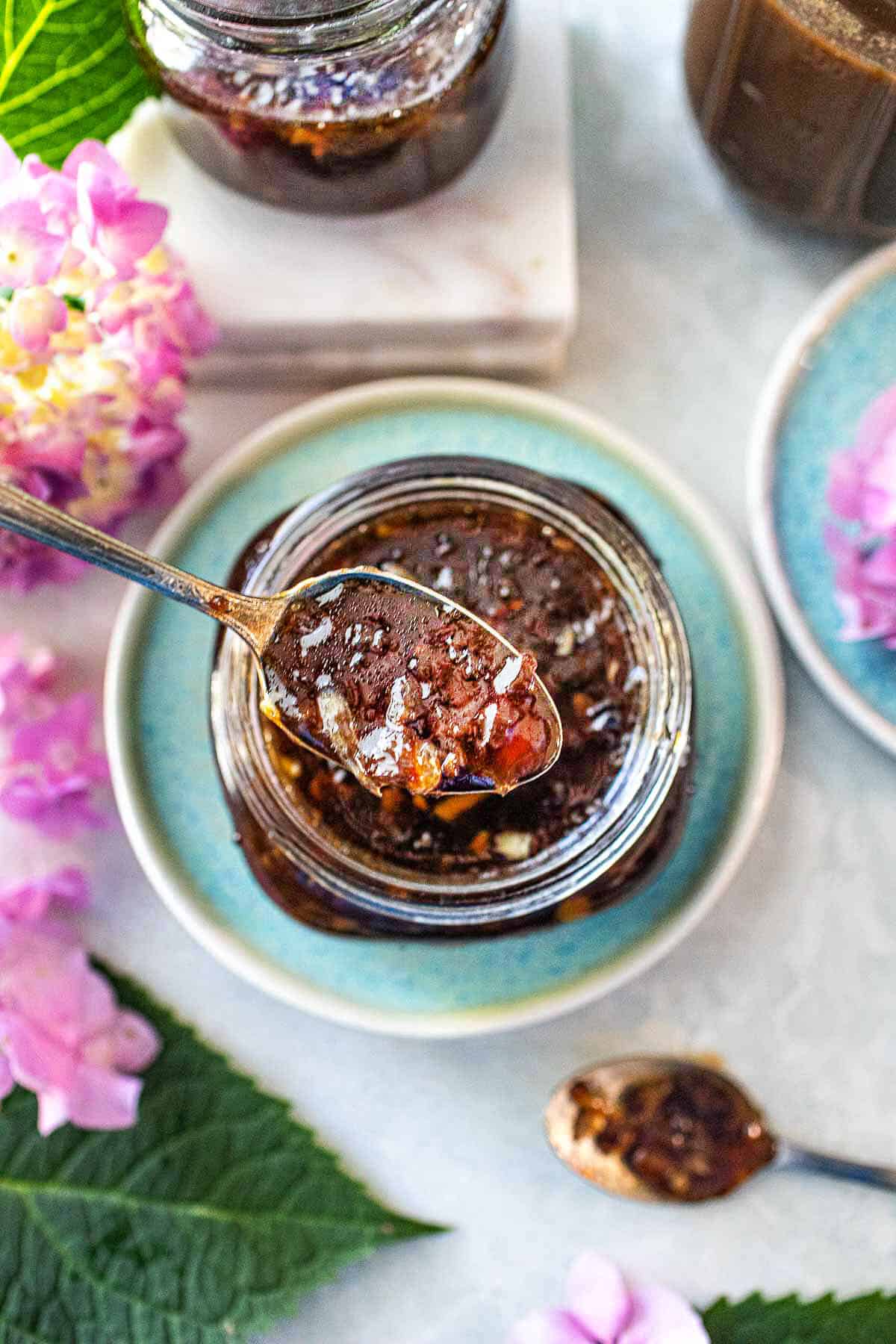
Frequently Asked Questions
While bottled tamarind sauce can be convenient, making your own sauce allows you to customize the flavors and achieve a fresher taste. Additionally, homemade sauce gives you control over the quality and authenticity of the ingredients.
Add more brown or palm sugar to the mixture if you prefer a sweeter sauce. Adjust the sweetness gradually, tasting as you go until you achieve the desired level of sweetness.
Fish sauce is a key ingredient in creating the authentic flavor of Pad Thai. However, if you have dietary restrictions or prefer a vegetarian version, you can substitute fish sauce with soy sauce or tamari for a different flavor profile.
More Thai Recipes You'll Love
Conclusion
With your homemade Pad Thai sauce, you can now create a plate of authentic and delicious Pad Thai in the comfort of your own kitchen. This popular Thai dish is known for its vibrant flavors, enticing aroma, and satisfying textures.
Using simple and common ingredients, you can capture the essence of Thailand and enjoy rave reviews from your friends and family. So, roll up your sleeves, gather the ingredients, and embark on a culinary adventure to experience the wonders of homemade Pad Thai sauce.
Love these recipes? If you do, please leave a 5-star rating in the recipe card below and/or a review in the comments section below the page, and follow me on Facebook, Pinterest, and Instagram!
Print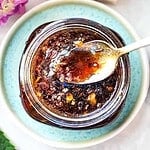
Authentic Pad Thai Sauce Recipe
- Total Time: 25 minutes
- Yield: 1.5 cups
- Diet: Gluten Free
Description
If you're a fan of Thai food, then you're in for a treat with this best homemade Pad Thai sauce recipe. It captures the authentic flavors of this popular Thai dish, combining tangy, sweet, and savory elements in perfect balance. Learn how to make our own Pad Thai sauce using only 6 ingredients for this recipe!
Ingredients
- ½ cup tamarind paste or tamarind concentrate. Homemade tamarind recipe. You can also use tamarind concentrate from a jar
- ½ cup fish sauce
- 1 cup palm sugar
- ⅛ cup garlic, minced
- ⅓ cup shallot, minced
- 2 tablespoons oil
Instructions
- Make tamarind paste from the pulp using this homemade tamarind recipe. You can also use tamarind concentrate from a jar. Store leftover tamarind paste in a glass jar in the fridge for other recipes! (Check below for other delicious tamarind recipes!)
- Add two tablespoons of oil over medium heat In a medium skillet with deep sides. Once hot, add garlic and shallot and cook until lightly golden brown. Using a small stock pot works too.
- Add the tamarind paste, fish sauce, and palm sugar, and stir well until the palm sugar melts. Stirring continuously until the sugar dissolves and the sauce reaches a smooth consistency and thickens slightly.
- You should have a dark and slightly thick tamarind sauce. Carefully taste the sauce (it's hot! ). Adjust the flavors according to your preference. If you prefer it tangier, add more lime juice; if you like it sweeter, add more sugar and fish sauce for a saltier flavor. Customizing the sauce to your liking is the key to creating a truly exceptional Pad Thai.
- Remove the sauce from the pan and pour into a heat-safe container like a glass bowl or jar. The sauce will thickens as it cools. You can stop here or add this next step.
- Optional step! Once the sauce cools, add the Pad Thai sauce to a small food processor to get a smooth tamarind puree sauce. I didn't, as I loved the texture of the garlic and shallot and used the sauce as a dipping sauce. Do as you wish with this step. You're the boss now! (;
Notes
- Experiment with the sweetness and tanginess of the sauce to find your perfect balance. Start with the recommended measurements and adjust according to your taste preferences.
- Use quality palm sugar with no white sugar added. Soft palm sugar paste-like form is the best for making this Pad Thai sauce.
- Use good quality tamarind paste for the best results. Look for brands that offer pure tamarind paste without any additives.
- A small stock pot works for making the sauce. However, I find that the wider pan helps with the consistency of the sauce. A large saucepan will not work, as the sauce gets burnt easily.
- A small wok works too. A large pok could work only if it has a round bottom. My carbon steel wok cooks the sauce too quickly despite the low heat I tested the recipe on.
- Wash your pan as soon as it is enough to wash. The sticky caramelized sauce is hard to wash off once hardened!
** Thank you so much for visiting my blog! This is truly a passion for me. If you have enjoyed these recipes and appreciate the hard work I put into them, I would love it if you would share them with your friends! Your recommendation is the highest review I could hope for, and I’d appreciate it! **
- Prep Time: 15
- Cook Time: 10
- Category: Sauces, Easy recipes
- Method: stovetop
- Cuisine: Thai
More Thai recipes using tamarind
Check out these recipes you might like!

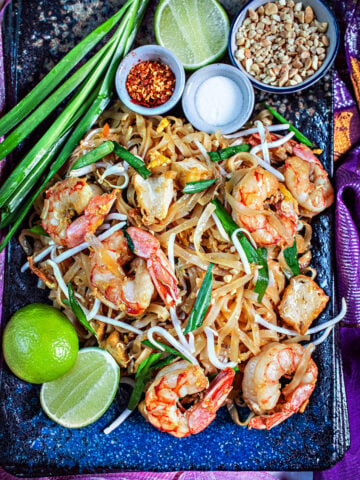

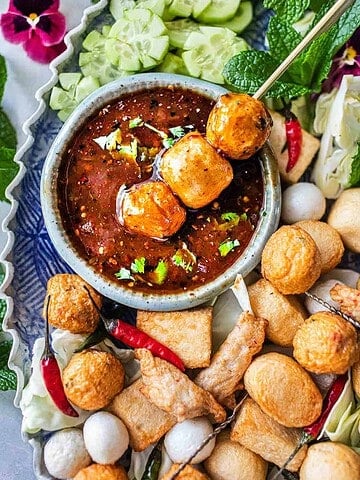
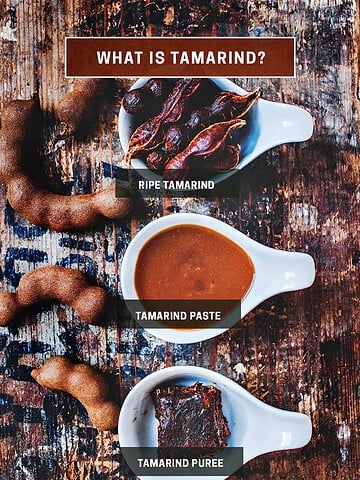
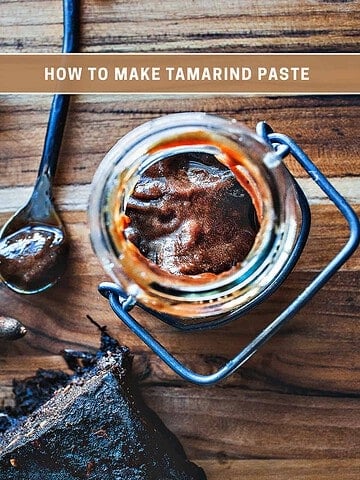
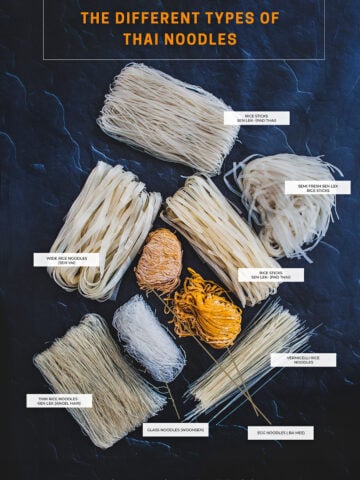
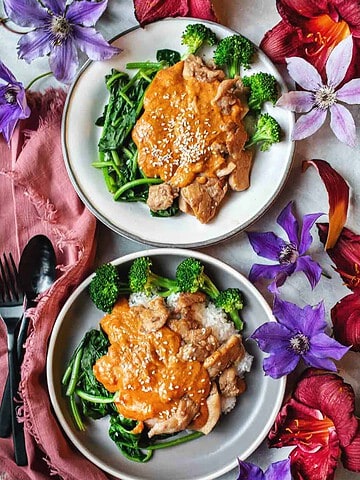
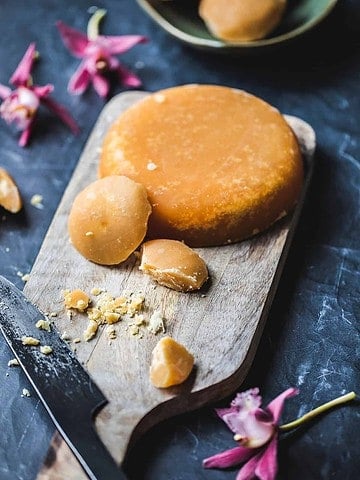
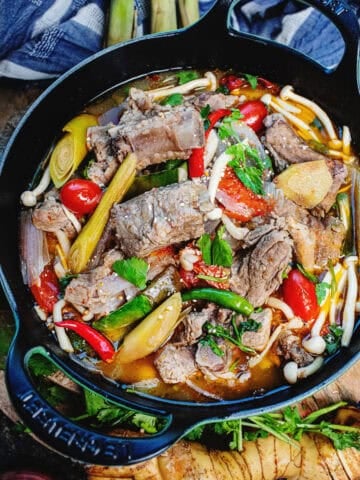
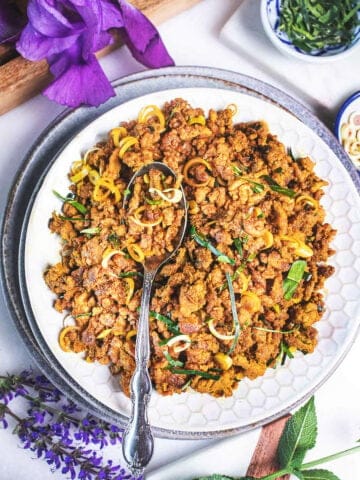


Mary says
This sauce is amazing on everything!! We had pad Thai for dinner and it was a family favorite. We even used this sauce for dipping chicken in while we waited for the main course. This sauce has ruined me for any other restaurant orders in the future!
Alison says
Made this for a veggie & tofu tray and it was super yummy! Our new favorite dipping sauce!
Suwanee says
Delighted to hear this, Michael!
Michael says
For an incredible Pad Thai sauce recipe, I am completely in love! Having the luxury of owning a tamarind tree, it was a thrill to incorporate my very own tamarind in this traditional Thai dish. With my homemade tamarind juice, fish sauce, palm sugar, and chili flakes, the sauce was effortlessly assembled. Its mixture of flavors is flawless - delivering a combination of sour, sweet, salty, and spicy all at once. I combined the sauce with shrimp, tofu, eggs, bean sprouts, and peanuts, tossing it all together with fresh rice noodles, resulting in an outstanding rendition of Pad Thai. The sauce hits the mark for anyone seeking a totally authentic Pad Thai experience at home. So, I can whip up another round of this restaurant-quality Pad Thai in minutes. The leftovers freeze beautifully.
Leslie M says
Extra tasty and addictive! Used for grilled veggies and tofu and it was amazing! The perfect sauce!
Suwanee says
Hi Michelle, I think you're on to something with the wings! Thank you for making it, and so glad you enjoyed it!
Suwanee says
Hi Sophiea,
I don't see why not? Mine haven't made it that far yet, but if you freeze it, let it thaw out slowly rather than zap it on high in the microwave. That should hopefully preserve some flavors with slow heating or thawing. Hope that's helpful.
Sophiea says
Hello@ once the sauce has been made, can you freeze it?
Thank you!
Sophiea
Michelle says
Love the tangy flavor of this sauce. The flavors come through so well. I think it would make a great sauce for wings as well. Can’t wait to try it again.
Will says
Officially my new favorite Pad Thai sauce. The flavors are deep with layers of umami and sweet and sour. Delicious!